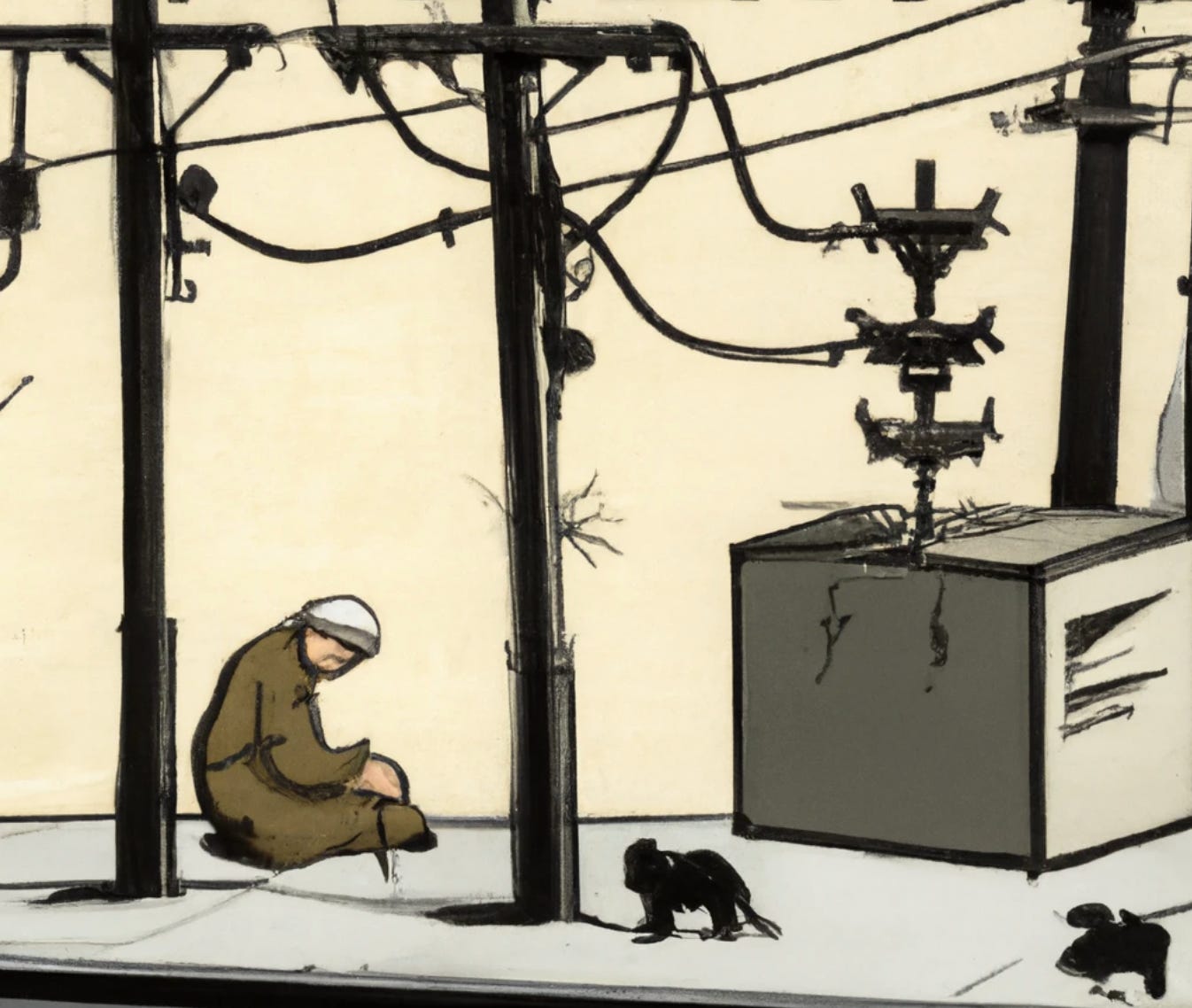Thank you for supporting Carbon Trading, a publication committed to exploring the complex world of carbon markets. I'm excited to share that I've recently graduated from university, where my passion for this important field was ignited and nurtured. Now, your subscription—whether free or paid—helps me dive deeper, research extensively, and continue providing you with insightful articles. Every subscription truly makes a difference and empowers me to expand the scope and depth of this platform. Thanks for joining me on this journey and for your continued support.
As the world grapples with the aftermath of Covid-19 and geopolitical tensions, the arrival of a new El Niño event threatens to wreak havoc on an already delicate global economy. The transition from the cooler La Niña to the warming phase of El Niño brings forth a cascade of challenges, particularly for rapidly growing emerging economies. Power grids strain, blackouts become commonplace, extreme heat sparks public health emergencies, and droughts amplify fire risks. Crops are lost, roads turn into waterways, and homes succumb to destruction.
According to Bloomberg Economics modeling, previous encounters with El Niño have left a lasting impact on global inflation, driving non-energy commodity prices up by 3.9 percentage points and oil prices up by 3.5 points. The blow to gross domestic product (GDP) growth has been especially severe in vulnerable countries such as Brazil, Australia, and India.
Compounded by the intensifying effects of climate change, the forthcoming El Niño cycle is predicted to be the most costly yet, presenting the dreaded risk of stagflation, where inflation remains high even as the economy contracts. Central banks find themselves limited in their ability to respond, as El Niño primarily affects supply rather than demand. For instance, heavy rains triggered by El Niño in Chile could disrupt access to copper mines, impacting the global price of this vital metal.
China is already grappling with sweltering temperatures that are taking a toll on livestock and straining power grids. Drought conditions experienced last summer led to power outages affecting major manufacturing players like Apple and Tesla. Furthermore, the price of coffee could skyrocket if El Niño hits top suppliers like Brazil and Vietnam.
The economic repercussions of El Niño are far-reaching and enduring. Researchers at the Dallas Federal Reserve cautioned that El Niño cycles can have a persistent negative impact on output growth, potentially altering income trajectories. Dartmouth scientists estimated that the 1997-1998 El Niño caused a staggering $5.7 trillion loss in global GDP over the subsequent five years. Their projections indicate that El Niños could hinder up to $84 trillion in GDP by the end of this century.
Tropical and Southern Hemisphere regions face the most acute risks, with El Niño slashing nearly half a percentage point off annual GDP growth in countries like India and Argentina. Peru, Australia, and the Philippines could experience reductions of approximately 0.3 percentage point. Rising prices exacerbate the consequences, as strong El Niños can drive commodity-price inflation up by 4 percentage points.
Escalating temperatures amplify the impact of climate phenomena. Recent years have seen an increasing number of extreme weather events, even without El Niño, evoking scenes reminiscent of Hollywood disaster movies. The fear among scientists is palpable, as Greg Mullins, an Australian firefighter, recalls facing towering walls of flames in a 2020 blaze. Drought worries plague regions in the northern United States and Canada, and timber dryness heightens the risk of devastating wildfires.
El Niño's influence extends beyond physical boundaries. Power grids worldwide struggle to cope with rising temperatures, leading to increased fuel demand and potential blackouts triggered by fuel shortages. Renewable energy transitions exacerbate the risk, as solar farms go dark during peak electricity demand in sweltering summer evenings, and hydroelectric power is constrained by drought.
The specter of blackouts looms over the United States, with widespread extreme heat posing elevated risks this summer, according to the North American Electric Reliability Corp. Outages can have severe consequences, from the disruption of daily life to life-threatening health risks like heat stroke and an increased likelihood of heart attacks and strokes.
The impact on agriculture is profound, with some crops benefiting from El Niño-induced higher rainfall while others face challenging growing conditions. Staple commodities such as palm oil, sugar, wheat, cocoa, and rice are predominantly produced in areas likely to be affected.
The poorest populations bear the brunt of El Niño's consequences, as acute food insecurity reaches a record high due to the combined effects of conflict, economic shocks, and extreme weather. The 2015-16 El Niño led to increased malnutrition rates, forced displacement, and outbreaks of cholera and typhoid. Humanitarian appeals exceeding $5 billion were issued by nearly two dozen nations.
While each El Niño event is unique, its effects hinge on duration, intensity, and timing. These climate phenomena exist in shades of gray, capable of bringing both droughts and floods during their course. Regardless, even if a major El Niño is avoided this year, the stresses induced by climate change continue to intensify as greenhouse gas levels rise.
To grasp the oscillation between El Niño and La Niña within the larger context of climate change, envision a person on a rising escalator, occasionally tiptoeing or squatting. Their stature may change, but the direction remains the same – upward. The escalator only ascends, says Mike McPhaden, a senior scientist at the US National Oceanic and Atmospheric Administration. A significant amount of heat stored beneath the surface of the Earth is poised to erupt.
As El Niño sets in, it joins forces with the existing impacts of climate change – scorching heatwaves, severe droughts, and extreme wildfires. Record-breaking weather events in Asia serve as a sobering reminder of the challenges we face. With the official arrival of El Niño and the expectation of its intensification in the coming months, scientists fear that the world may experience more weather events that resemble scenes from disaster movies.
In the end, El Niño represents just one piece of the climate change puzzle, and as we navigate the escalator of global warming, the challenges before us grow more complex and demanding.






